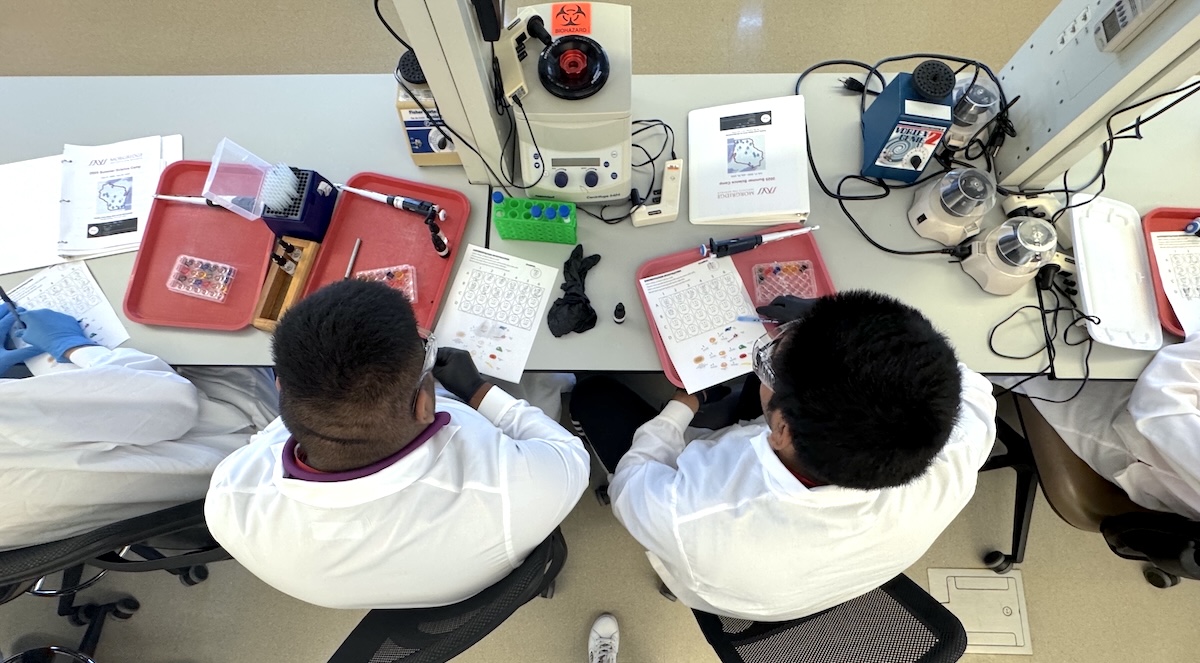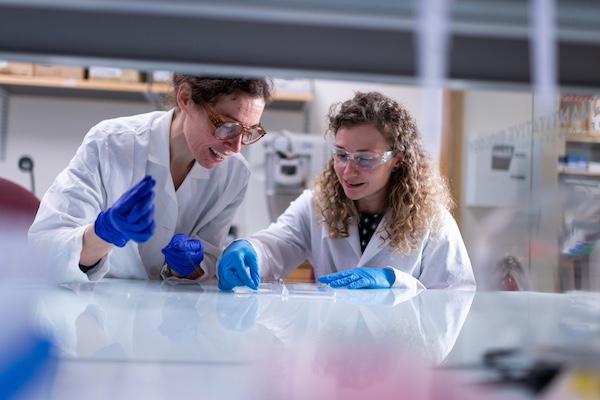The Morgridge Institute hosted its 19th annual Summer Science Camp this past July. Over three week-long sessions, 65 high school students from 13 Wisconsin school districts experienced science firsthand, and got a taste of college life during their stay on the UW–Madison campus.
“My students and I had an incredible week of science and memory-making at this camp,” says Darlington High School teacher Cristina Wolfe. “Every one of them came home excited about their futures in a different way than when we arrived, with both academic and life experiences that they were able to see themselves as people with futures in science.”
During the week, students are immersed in an environment right alongside Morgridge Institute and UW researchers to explore the breadth and depth of careers in science, technology, engineering, and mathematics (STEM). They studied fruit fly genetics and how they are used to understand human diseases, learned how engineers develop and build advanced microscopes, explored the potentials and the limitations of artificial intelligence (AI) tools in research, and more.
“I’m 16 and trying to figure out what I want to do [as an adult]. This camp is helping me venture into the science of medicine, and I’m excited to learn more,” says one Wonewoc-Union Center student.
In addition to the science activities, students had the opportunity to get a glimpse of college life during their stay in the university dorms. During the week, they explored the university campus and received personalized advising from UW–Madison Admissions and Student Financial Aid.
“My students made lasting memories, explored phenomenal opportunities not possible in our home district, and connected with students and scientists doing real-world research,” says Scott Kelley, a teacher at Burlington High School. “Huge thanks to Morgridge for hosting us, we can’t wait to return with more bright and eager minds!”
Check out photos from the 2025 Summer Science Camps below.
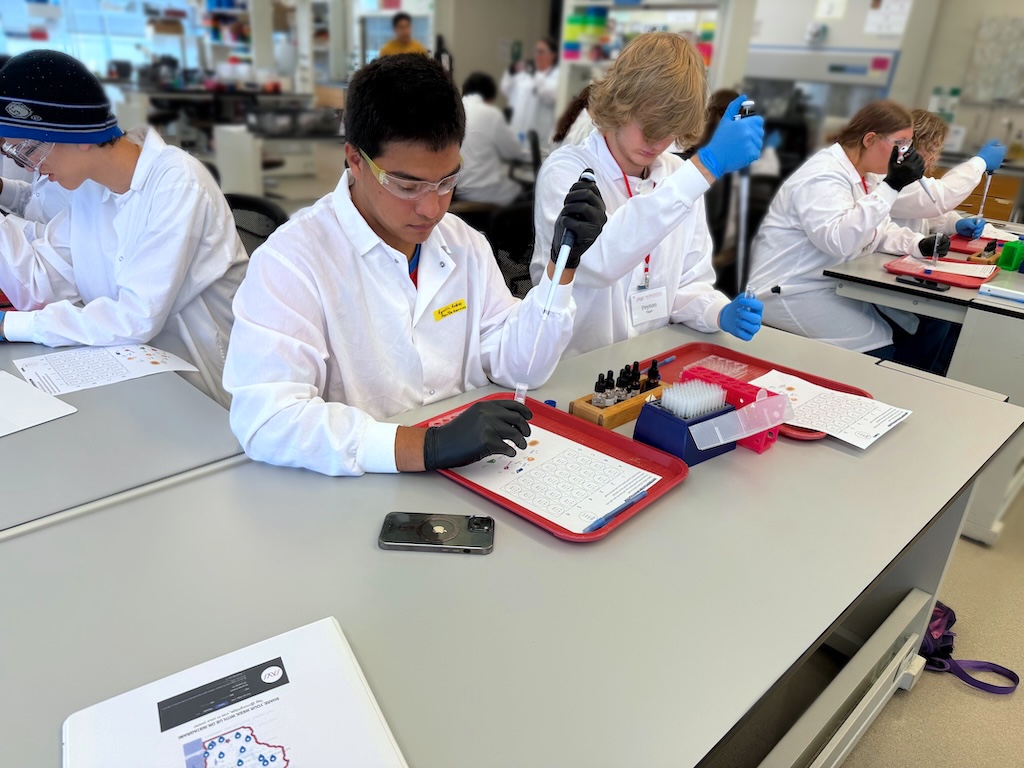 Students practice using lab tools while learning how stem cells differentiate into specialized tissues.
Students practice using lab tools while learning how stem cells differentiate into specialized tissues.  In the Morgridge Institute teaching labs, campers tested cardiac drugs on human heart cells to explore how medicines impact cell function.
In the Morgridge Institute teaching labs, campers tested cardiac drugs on human heart cells to explore how medicines impact cell function.  Students become collaborators as they experiment with the physical properties of different materials.
Students become collaborators as they experiment with the physical properties of different materials. 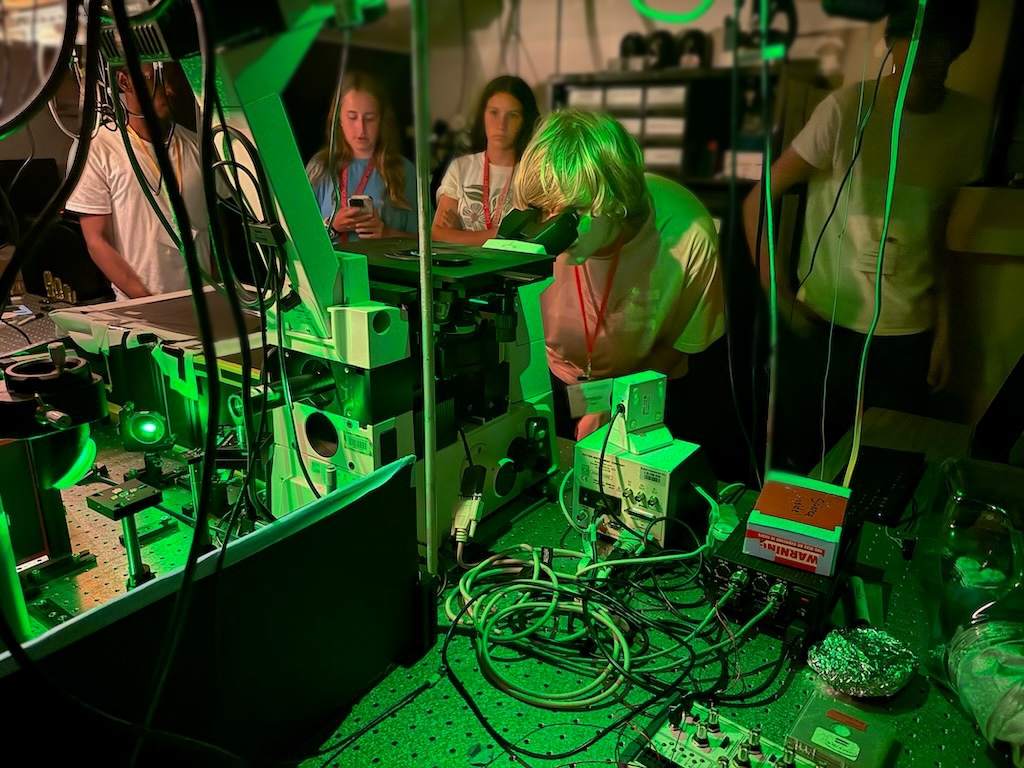 At the Department of Chemistry, campers peer into advanced microscopes that can examine samples one molecule at a time.
At the Department of Chemistry, campers peer into advanced microscopes that can examine samples one molecule at a time. 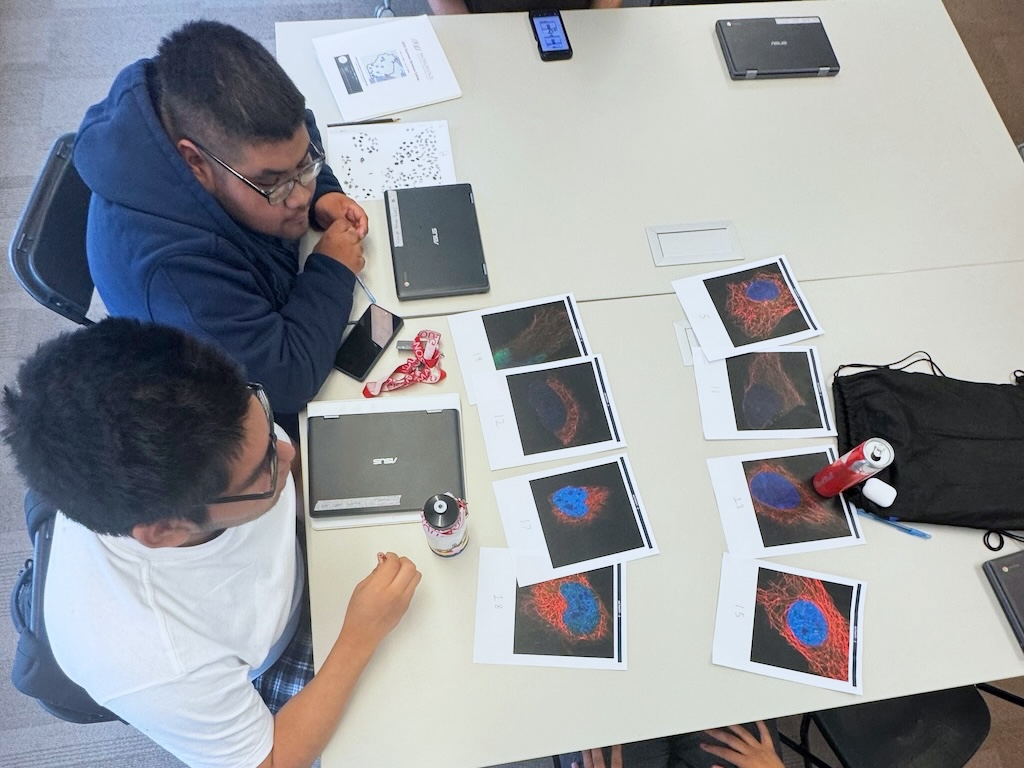 While learning about AI tools for processing microscopy images, students try to organize images in an attempt to "outperform the algorithm."
While learning about AI tools for processing microscopy images, students try to organize images in an attempt to "outperform the algorithm." 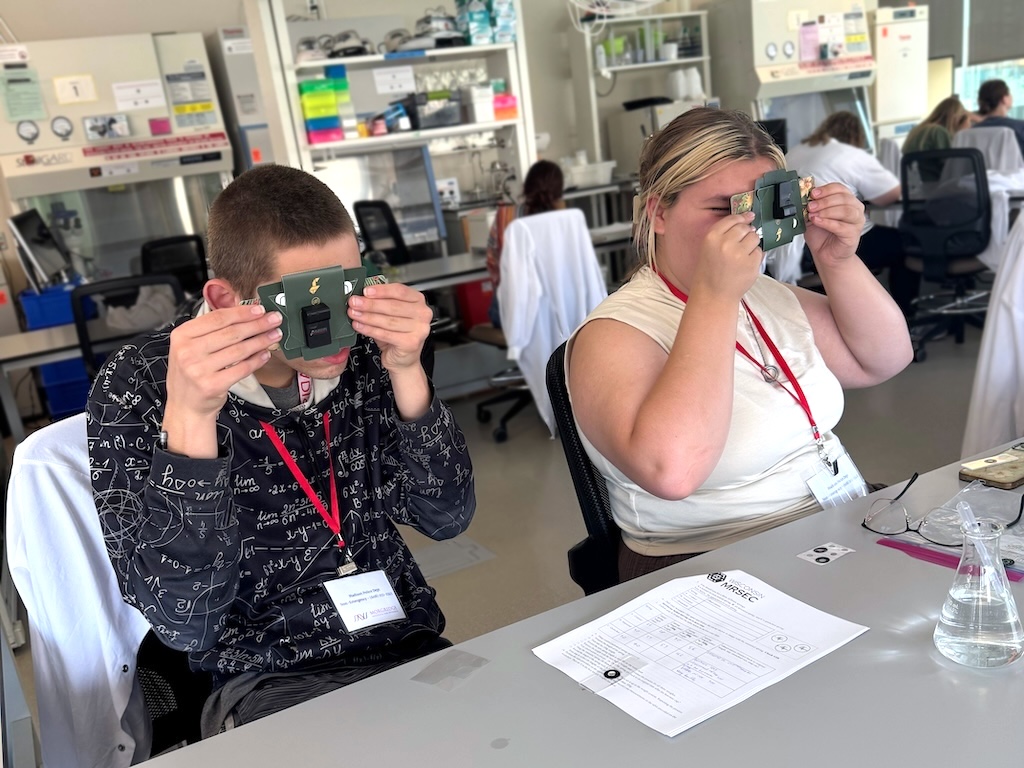 Summer campers unlock the mysteries of microscopes as they construct their own foldscopes out of paper and optical lenses to observe single cells.
Summer campers unlock the mysteries of microscopes as they construct their own foldscopes out of paper and optical lenses to observe single cells. 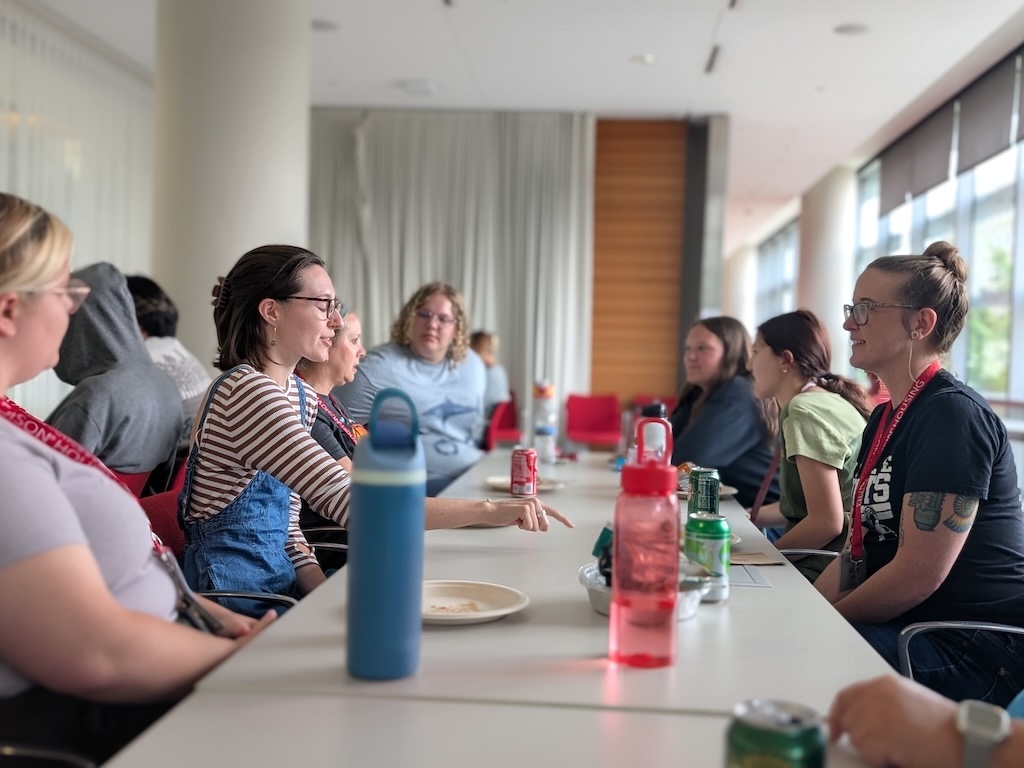 High school campers meet with undergraduates, graduate students, and staff scientists during the lunchtime "Science Cafés."
High school campers meet with undergraduates, graduate students, and staff scientists during the lunchtime "Science Cafés." 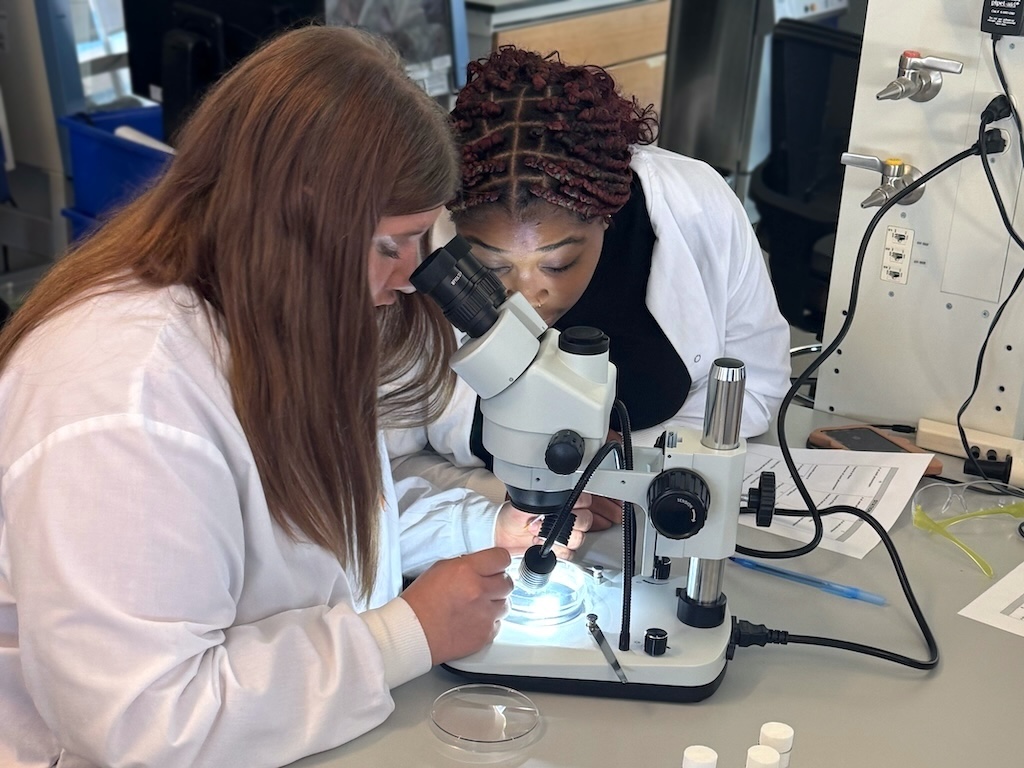 Students observe fruit flies and discuss genetic mutations and what it teaches us about human disease.
Students observe fruit flies and discuss genetic mutations and what it teaches us about human disease. 